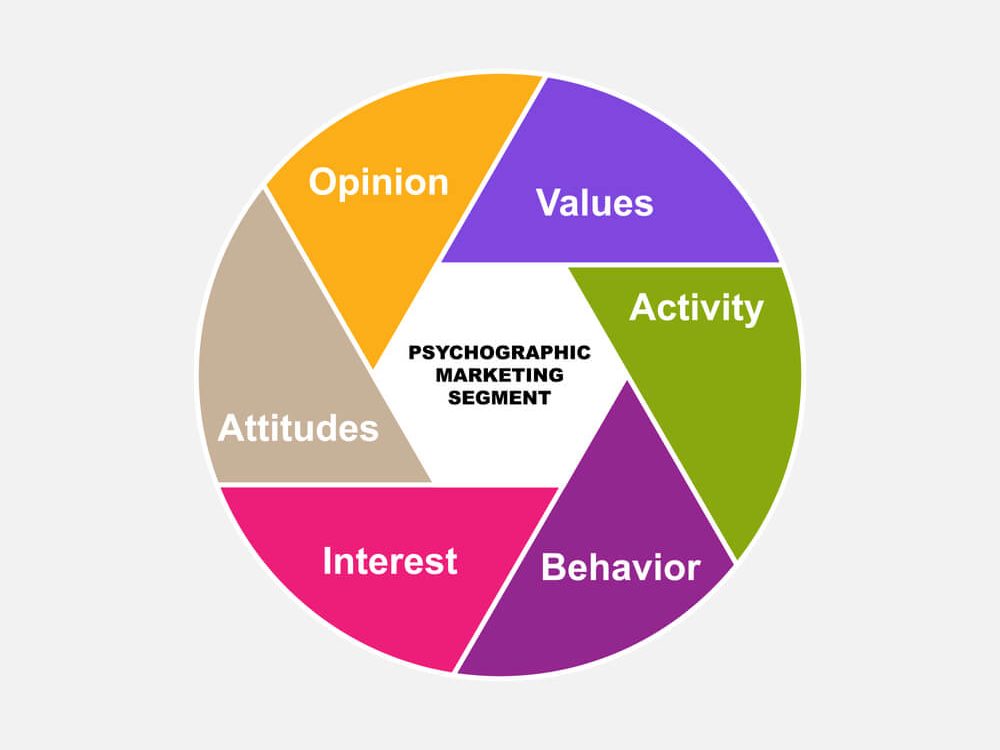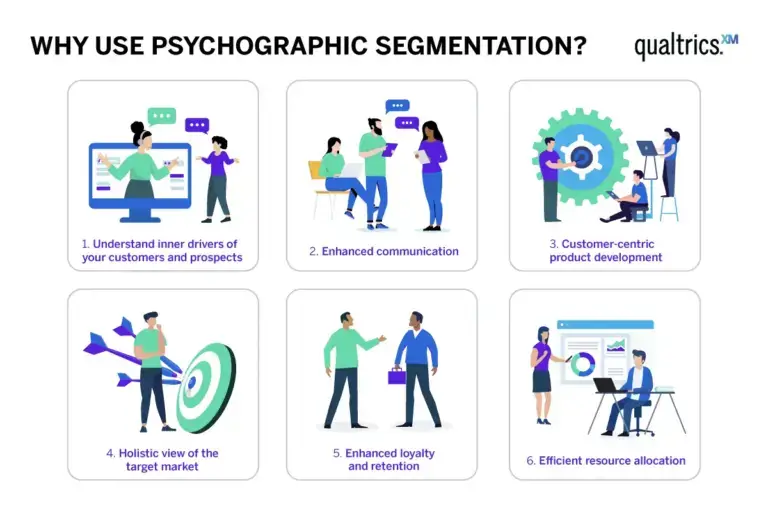Psychographic target market refers to the segmentation of consumers based on their lifestyle, interests, values, and attitudes. It aims to understand the psychological factors driving consumer behavior.
Businesses use psychographic segmentation to create detailed customer profiles. This allows them to tailor marketing strategies more effectively. By focusing on values, beliefs, and interests, brands can connect deeply with their audience. Understanding these factors helps in crafting personalized messages.
This enhances customer engagement and loyalty. Psychographic data includes activities, opinions, and social status. Such insights are invaluable for product development and promotions. Companies can predict purchasing behavior more accurately. This type of targeting ensures marketing efforts resonate well with the intended audience. Ultimately, it leads to higher conversion rates and customer satisfaction.
The Essence Of Psychographics In Marketing
Psychographics study people’s attitudes, interests, and opinions. They go beyond basic demographics like age or gender. Marketers use psychographics to understand what motivates consumers. This helps in creating better marketing campaigns.
Psychographics help in discovering consumer preferences. They reveal why people make certain choices. This insight helps businesses tailor their products. Understanding psychographics leads to more effective advertising. It also helps in building brand loyalty.

Credit: www.formpl.us
Diving Into Psychographic Segmentation
Psychographic segmentation looks at people’s interests, activities, and opinions. This method helps businesses understand their audience better. It groups people based on their lifestyle and values. Businesses can create more effective marketing strategies this way. Knowing what motivates customers is key. It helps tailor messages to specific groups. Interests can include hobbies or sports. Values might include beliefs or ethics. Activities could be daily routines or special events. Opinions involve thoughts on various topics. Psychographic data offers deeper insights than basic demographics.
Demographics focus on age, gender, and income. Psychographics go beyond these basic facts. They look at what people care about and why. Demographic data is easier to collect. Psychographic data needs more research. Both types of data are useful. Demographics tell us who the customers are. Psychographics tell us why they buy. Together, they create a full picture of the target market. Businesses need both to succeed. Understanding both helps create better products and services.
Tools And Techniques For Gathering Psychographic Data
Surveys and questionnaires help collect detailed information. They ask people about their interests, values, and lifestyles. These tools are easy to use and can reach many people. They provide quantifiable data. This data helps understand the target market better.
Social media analytics show insights about user behavior. They track likes, shares, and comments. These analytics reveal patterns in user preferences. They help in understanding what content engages the audience. Tools like Facebook Insights and Twitter Analytics are useful.
Focus groups gather a small group of people. They discuss their opinions and experiences. These groups offer deep insights into customer thoughts. They help in understanding emotional connections with products. Focus groups are great for qualitative data.

Credit: xperiencify.com
Crafting A Psychographic Profile: A Step-by-step Guide
Key psychographic variables include values, attitudes, and lifestyle choices. Values reflect what people find important. Attitudes show how people feel about certain topics. Lifestyle choices reveal daily habits and routines. These variables help understand the target market’s inner world. Gathering data on these variables is crucial. Surveys and interviews are good methods for this. Analyze the data to find common patterns. Patterns reveal what motivates your audience.
Start by gathering basic information. This includes age, gender, and occupation. Next, add psychographic details. These details include hobbies, interests, and values. Create a name and backstory for each persona. This makes them feel real. Use these personas to guide marketing decisions. Tailor your messages to match their needs and desires. This makes your marketing more effective.
Applying Psychographic Insights For Strategic Marketing
Understanding customer values helps craft better messages. Messages need to resonate with their lifestyle. This connection builds a stronger emotional bond. Customers are more likely to respond positively when they feel understood.
Different groups prefer different platforms. Younger audiences might like social media. Older groups might prefer emails or TV ads. Knowing these preferences ensures effective communication. Marketers can reach their target audience more efficiently.
Psychographic data can guide product development. It reveals what features matter most to your audience. Companies can then create products that meet these needs. This leads to higher customer satisfaction and increased loyalty.

Credit: www.qualtrics.com
Challenges And Ethical Considerations
Protecting data privacy is important. People’s personal information must be safe. Companies collect lots of sensitive data. This data can be misused. Hackers can steal this data. Businesses need to be careful.
Psychographic data may not always be right. People change their minds often. Surveys and questionnaires can be wrong. Sometimes, data gets old. Accurate data helps businesses make good decisions.
Ethical marketing means being honest. Don’t trick people. Ads should be truthful. Respect people’s choices. Transparent marketing builds trust. People should feel safe.
Frequently Asked Questions
What Are The 5 Psychographic Segments?
The five psychographic segments are: 1. Innovators: Seek new experiences and ideas. 2. Thinkers: Value knowledge and information. 3. Believers: Hold traditional values and beliefs. 4. Achievers: Driven by success and goals. 5. Experiencers: Pursue excitement and adventure.
What Is An Example Of A Psychological Target Market?
An example of a psychological target market is fitness enthusiasts. They value health, wellness, and active lifestyles.
What Is Psychographic Characteristics Of Consumer Market?
Psychographic characteristics of a consumer market include lifestyle, values, interests, opinions, and personality traits. These factors influence buying behavior.
What Is An Example Of A Psychographic Audience Analysis?
A psychographic audience analysis example includes studying audience lifestyle, values, interests, and attitudes. This helps in tailoring marketing strategies.
What Is Psychographic Target Market?
A psychographic target market segments consumers based on lifestyle, interests, and values, enhancing marketing effectiveness.
Conclusion
Understanding your psychographic target market can significantly boost your marketing strategy. Tailor content to meet their interests and values. Personalized marketing builds stronger connections and drives engagement. Stay focused on their needs, and your business will thrive. Effective psychographic targeting ensures you resonate deeply with your audience.
